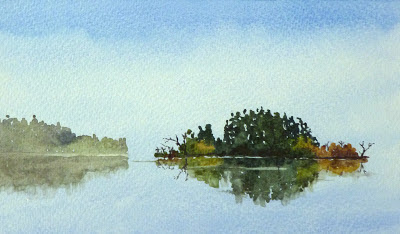 |
| Coverack Harbour Watercolour on Paper 19cm x 28cm (7.5" x 11") |
This is a view of Coverack harbour for which I posted some preliminary sketches in October (see Preparations for Coverack Harbour). In the original post, I was hopeful the painting would be finished by the next weekend. In retrospect, this was slightly optimistic.
It has been great to have some time over Christmas to finish this off and to catch up with some other painting.
Coverack is a fishing village on the Lizard peninsula in Cornwall. Elaine and I are planning a visit in the summer as part of our excursion to Cornwall and the Scilly Isles. The picture is based on some of David and Jane’s holiday photographs.






